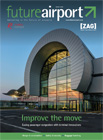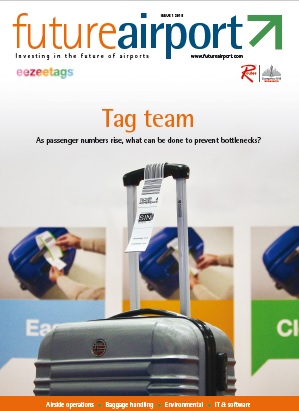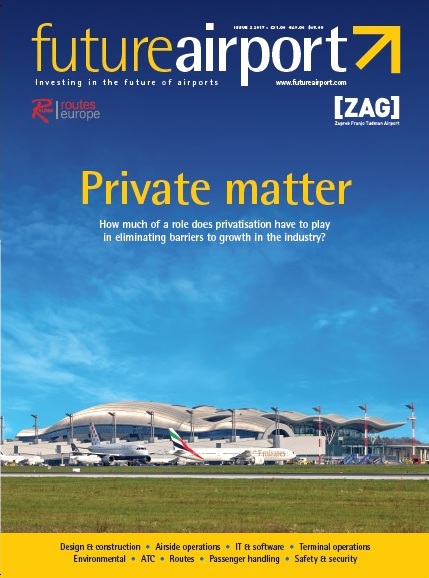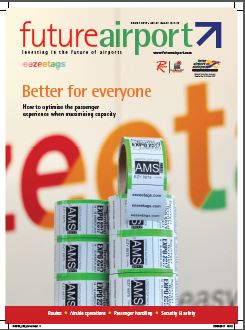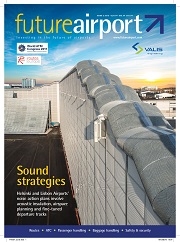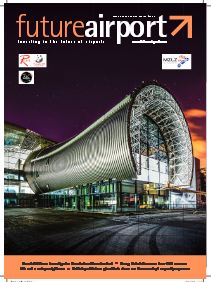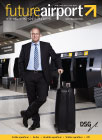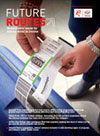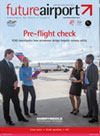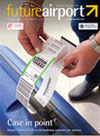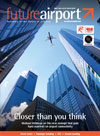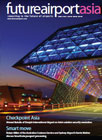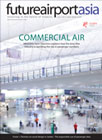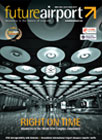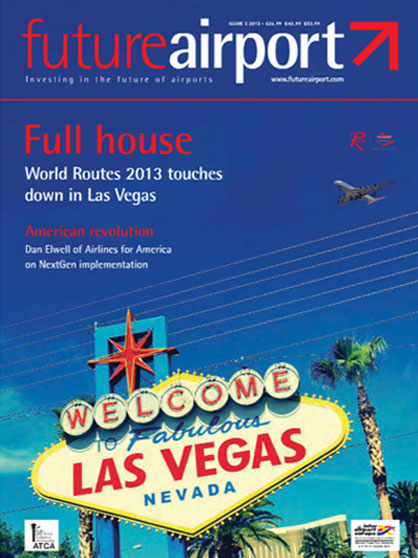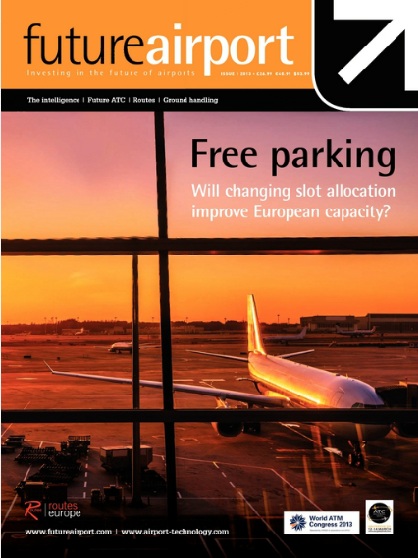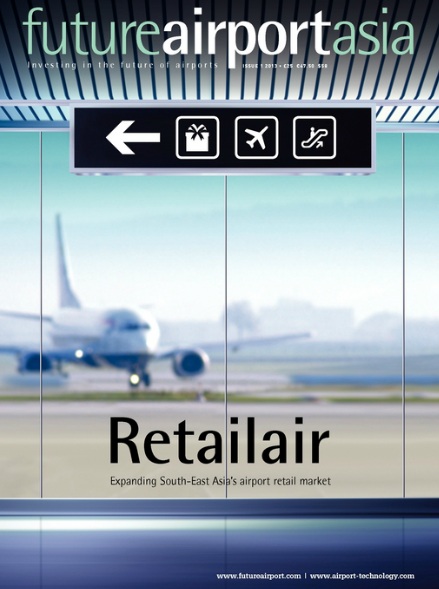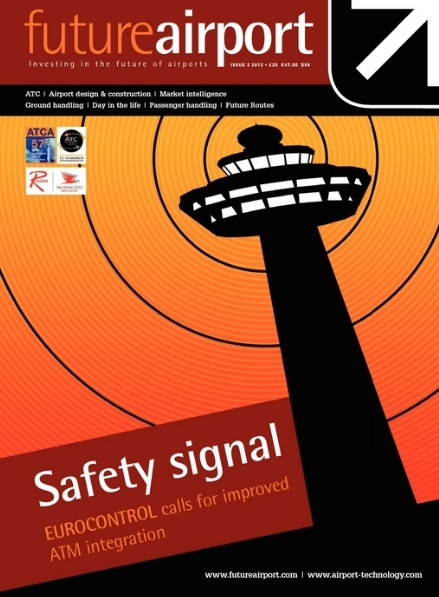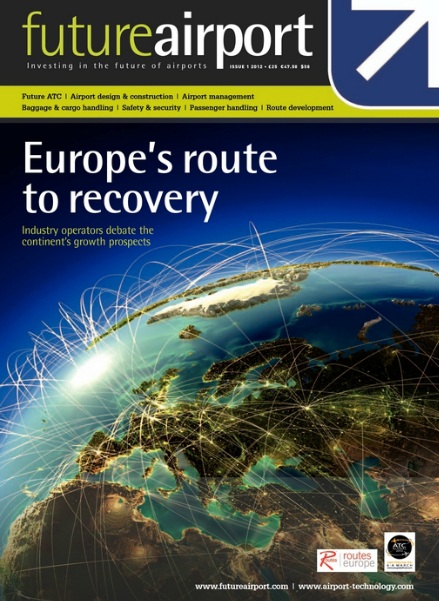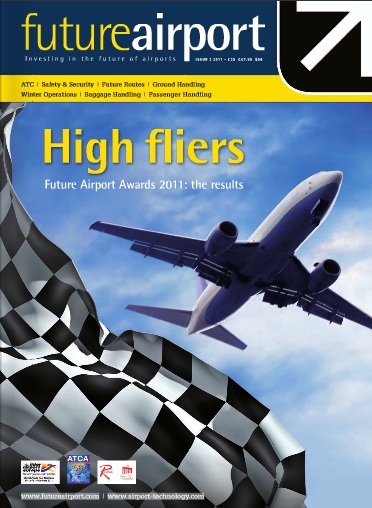The Publications
Future Airport Issue 1 2023
Nicholas Kenny speaks with Jonathan Pollard, chief commercial officer at London Gatwick, to hear about the airport's ongoing recovery; how it aims to avoid issues like the staffing shortages that have plagued the industry over the past year; and why its refreshed vision and rebranding in April came at the perfect time.
Portland International Airport's new main terminal, the centerpiece of a $1.5bn project, is due to open in 2025. Andrea Valentino talks to Sharron van der Meulen, a partner at ZGF Architects and lead interior designer on the project; and Vince Granato, the chief projects officer at the Port of Portland, to learn more.
Brooke Theis hears from Marie Owens Thomsen, IATA's SVP sustainability and chief economist; Henrik Hololei, the director general for mobility and transport for the European Commission; and Tim Alderslade, CEO of Airlines UK, to explore both sides of the argument around France's partial ban on short-haul flights.
Future Airport Issue 2 2022
Andrea Valentino talks to insiders at Phoenix and Helsinki airports to understand how staffing shortages are impacting their operations, how digitalisation can help – and the need for careful planning and better conditions to keep operations running smoothly.
The International Air Transport Association (IATA)'s De-Icing/Anti-Icing Quality Control Pool (DAQCP) has been there to help airlines choose the right service providers and to share best practices for the past 25 years. Liam Murphy speaks to Dimitri Rybkin, chairman of the DAQCP, and Jessica Dawe, manager, charter of professional auditors at the IATA, to hear why the pool's work is more important than ever.
Brooke Theis speaks with Rachel Burbidge, senior policy officer of environment and climate change at Eurocontrol; Greg White, director of the Airport Pavement Research Program at the University of the Sunshine Coast; and Amit Bhasin, professor and director of the Centre for Transportation Research at the University of Texas, Austin; to learn about what airports can do to adapt and build resilience to climate change.
Future Airport Issue 1 2022
Set to be completed in 2023, the Red Sea International Airport will serve as the gateway to one of the world's most unique resorts, bringing the experience of a private aircraft terminal to every traveller. Elly Earls speaks with Gerard Evenden, head of studio at Foster + Partners, and Nicholas Cole, CEO of daa International, about the vision behind this ambitious project.
With the rise of electric vertical take-off and landing aircraft (eVTOLs), traditional aviation infrastructure is changing fast. Andrea Valentino talks to Ankit Dass, CTO at Skyports, as well as to German firm Volocopter, to understand how new technology is boosting the popularity of eVTOLs, and what this means for both passengers and freight.
In December 2021, NATS implemented the biggest ever geographical airspace change in the UK, removing long-established air routes over Scotland and freeing aircraft to choose their most direct flight path. Nicholas Kenny talks to Lee Boulton, head of airspace development at NATS, about what this change will mean for air traffic operations and what work was involved in making this 'free route airspace' a reality.
Future Airport Issue 2 2021
The return of transatlantic routes has helped boost the recovery of air travel in the second half of 2021. Abi Millar speaks with Thomas Reynaert, managing director at Airlines for Europe (A4E), and other industry experts, to find out more about what the return of transatlantic flights means to the industry and passengers.
The UK's largest airport has lost £3.4bn in revenue since the beginning of the pandemic – yet, Heathrow CEO John Holland-Kaye remains optimistic. Elly Earls finds out why Heathrow Airport is focusing on recruitment and reducing carbon emissions, and why now is the time for the UK air travel industry to pull together and adapt for the future.
Andrea Valentino talks to Andy Taylor, chief solutions officer at air navigation service provider NATS, and Conor Mullan, managing director of air traffic consultancy Think Research, to understand the rise of digital towers and how the future might belong to a partnership between old and new forms of air traffic control.
Future Airport Issue 1 2021
What happens when an air traffic control team comes down with the coronavirus and how have airports been handling such setbacks? Nicholas Kenny speaks with Juliet Kennedy, operations director at NATS, and Teri L Bristol, COO of air traffic organization at Federal Aviation Administration (FAA), to find out.
Plagued by political wrangling and construction setbacks, the Berlin-Brandenburg Willy Brandt Airport opened in October 2020, nine years late and more than €4bn over budget. Abi Millar talks to Hans Joachim Paap, associate partner of architecture firm gmp, about the long road that followed its initial design.
Andrea Valentino hears from Myron Keehn, vice-president of air service and business development at Edmonton International Airport, and Vincent Harrison, managing director at Dublin Airport, about why their organisations are adopting new initiatives can boost both the planet and bank accounts.
Future Airport Issue 2 2020
Abi Millar hears from Simon Hocquard, director-general of the Civil Air Navigation Services Organisation, and Razvan Bucuroiu, head of network strategy and development at Eurocontrol, to learn how air navigation service providers can best manage a return to normality.
In 2013, officials at Salt Lake City International announced major renovations to address rising demand and creaking infrastructure. Andrea Valentino talks to Matt Needham, the regional leader for aviation and transportation at architectural practice HOK, and Gordon Huether, a distinguished artist who worked on the new airport, about what's in store.
Greg Noone speaks with Luis Felipe de Oliveira, the new director-general of Airports Council International, to find out what key steps need to be taken by national governments and operators to restore passenger confidence in air travel.
Future Airport Issue 1 2020
While up to half of humanity in enforced lockdown, airports are busy preparing for a post-pandemic future. Will Moffitt discusses what new terminal experiences lay ahead with principal at travel advisory group Atmosphere Research, Henry Harteveldt.
Andrea Valentino chats with Michael Christensen, deputy executive director of operations and maintenance at Los Angeles World Airports, as well as Seth Morgan, Erin Cooke and Nupur Sinha of San Francisco International, to learn why California is taking the lead in bus electrification.
Also in this issue: Greg Noone talks to Andy Taylor, chief solutions officer for digital towers at National Air Traffic Services, and Philippe Merlo, the director for European Civil-Military Aviation at European Organisation for the Safety of Air Navigation, about why the time has come for ground control to learn something from AI...
Future Airport Issue 2 2019
The president and CEO of Flughafen München (FMG), Dr Michael Kerkloh, has experienced a long and successful career in aviation; under his watch, Munich Airport has been bestowed with the title of 'Best in Europe' 12 times. As he prepares to step down from the role he has held since 2002, he talks to Grace Allen about his successes at Munich, the changes he has witnessed and his expectations for the future of the industry.
Even in vast and architecturally striking spaces such as airports, successful and passenger-friendly design often depends on the details: lighting, furniture choices, surface materials and so on. Abi Millar discusses the process that goes into creating intelligent and unified interior concepts with Kristian Gilroy of Cinimod Studio and Peter Farmer of Chapman Taylor.
Also in this issue: Philip Hall, chair of the IEEE-USA Committee on Transportation and Aerospace Policy and CEO of RelmaTech, explains how to coordinate drone activity with air traffic management, and Grace Allen talks to Melissa Matthews, acting manager of the FAA's System Wide Information Management (SWIM) programme, on how to implement joined-up thinking across aviation.
Future Airport Issue 1 2019
In this issue: airport terminals can be challenging places for many, and for children they are often liable to be alternately boring, frustrating and frightening. However, taking their needs into account can make the terminal a more pleasant, fun environment for all passengers. Abi Millar speaks to Matthew Horobin, director of brand engagement at Dubai Airports, and Christopher Birch, director of guest experience at San Francisco International Airport, about how to best cater to the youngest travellers.
Martin Eurnekian, scion of an Argentinian business dynasty and CEO of Corporación América Airports, has recently taken on the mantle of chair of the Airports Council International (ACI) World governing board. In an exclusive interview, Eurnekian talks with Grace Allen about the challenges of meeting global demand for air travel at a time of critical importance for the industry, the value of collaboration to overcome disruption, and the role of the ACI in encouraging unity and providing leadership.
Also, Storms and cyclones can create havoc for airports, causing flooding, power failure and flight cancellations. Will Moffitt speaks to Huntley Lawrence, director of aviation for the Port Authority of New York and New Jersey, about dealing with 'Winter Storm Grayson' and how airports can better prepare for extreme forms of weather.
Future Airport Issue 2 2018
In June, the UK Parliament approved plans for a third runway at Heathrow Airport. Neil Thompson talks to Aviation Minister Baroness Elizabeth Sugg about the developments and controversies surrounding the expansion, and the potential risks and rewards that the future may hold.
From the food to the furnishings, the redesign of Nice Côte d'Azur Airport has focused on giving passengers a taste of the French Riviera until the moment they step on their flights home. Jim Banks speaks to the airport's chief commercial officer, Filip Soete, about how the four-year project has lived up to his vision.
Plus, The aviation market is booming, and many airlines, such as those owned by the Lufthansa Group, are having to grow rapidly in order to keep up with demand. Future Airport speaks to Alex Tolweth, director of sales for eastern Germany at Lufthansa, about advances and opportunities in the aviation industry. And, 41 Reimagine the airport With global passenger numbers set to double by 2037, airports are facing new capacity constraints. Hasse Jørgensen, a manager at IATA, explains to Abi Millar how new technologies will improve passenger flow.
Future Airport Issue 1 2018
Responding to agile and adaptable threats and increasing passenger numbers, the TSA has taken a fresh look at aviation security. Steve Karoly, TSA's former acting assistant administrator for the Office of Requirements and Capabilities Analysis, discusses the innovations currently being deployed in US checkpoints and his vision for a 'system of systems' - an integrated security system across the entire airport environment.
Also in this issue, more and more airports are looking to cloud services to give them a stronger competitive edge and improve the passenger experience. Irish airport operator daa, which runs Dublin and Cork airports, is no exception, as Padraic Doyle, president for technology, tells Future Airport.
Plus, at an exclusive roundtable dinner in Amsterdam, industry experts met to discuss the changing face of airport technology and the subsequent benefits. And finally, as more people are travelling by air, the burden on airport infrastructure increases, and baggage handling systems are under pressure to increase capacity without impacting on efficiency. We speak to Chris Norton of the International Association of Baggage System Companies about the opportunities digitisation and data management provide to meet and combat this challenge.
Future Airport Issue 2 2017
The British Airport Authority's transfer to private ownership in the 1980s sparked an increase in privatisation. Future Airport debates the positive and negative aspects of this trend with Gerben Broekema, an independent consultant based in the Netherlands, and former head of Royal Schiphol Group's strategy and international development.
Drones are transforming the way that companies do business, not least in the aviation industry where they can be used to check runways and monitor the airfield. But concerns about safety remain, especially after a spate of near misses between drones and commercial aircraft. Andrea Valentino talks to Chaim van Prooyen and Andrew Gobeil from Atlanta International Airport about how to alleviate these worries, while still taking advantage of what drones can offer.
Also in this issue: Stephen Hall meets Heikki Koski, vice-president and director of passenger management at Helsinki Airport, to discuss 'hands in the pockets' travelling. Plus, with the number of passengers passing through the world's airports forecast to double to almost eight billion in the next 20 years, the aviation industry is left with no choice but to improve its infrastructure, says IATA CEO Alexandre de Juniac.
Future Airport Issue 1 2017
In the wake of last year's massacre of 41 people, Istanbul Atatürk Airport has worked hard to find new ways of boosting security. Greg Noone talks to Mustafa Sani Sener, president and CEO of its operator, TAV Airport Holdings, about the challenges the site continues to face not only from terrorists but also overzealous allies.
Airports have always been primarily functional spaces, but today's designers are broadening their focus to include the entire travel experience. Gensler's Melissa Mizell and James Speed of Pascall+Watson discuss trends with Bradford Keen, touching on the power of intuition, the rise of retail and how to accommodate passenger diversity.
Also in this issue: Eleanor Wilson discusses low-cost long-haul routes with analysts Henry Harteveldt of Atmosphere Research Group and GeraldKhoo of Liberum Capital. Plus, Christian Nyberg, Arlanda's air and landside maintenance manager, and Per Lindgren, ground operations manager at Stockholm Arlanda, discuss cold-weather operations, while Jacques Leroux, chairman of the SAE G-12 Ground De-icing Committee, reveals how to keep aircraft frost-free.
Future Airport Issue 2 2016
Despite aircraft becoming far quieter during the past 40 years, the increase in the number of flights - particularly at busy European hubs close to centres of population - means the need for effective noise abatement strategies is paramount. Future Airport finds out how Helsinki and Lisbon Airports approach this issue.
At a roundtable event hosted by Future Airport in partnership with AOE, experts from some of Europe's busiest airports met in Amsterdam to discuss digital disruptions to a rapidly changing commerce model. Bradford Keen reports on the event, which saw Kai Schmidhuber, senior vice-president at Fraport, discuss the power of being agile and adaptable to consumer demands.
Also in this issue: Ralph Riedle, chairman of the Performance Review Commission, gives an overview of EUROCONTROL's 'ATM Cost-Effectiveness Report' published in May 2016, Greg Noone talks to Charlie Leocha, CEO of Travellers United, about how the BREXIT vote is likely to affect stakeholders in the years to come, and Kevin Brown, CEO of Perth Airport, explains how airports plan to stay one step ahead of security threats.
Future Airport Issue 1 2016
With passengers needing to spend longer at the airport, operators have recognised the role that art can play in creating an appealing environment, but engaging passengers entails a sophisticated approach that transcends the merely decorative. Sarah Williams finds out more from veteran curators Blake Summers of San Francisco International and Dr Yolanda Sánchez of Miami International, and UK artist Ros Burgin.
Frankfurt am Main International Airport, operated by Fraport, has long been at the forefront of technological innovation and is heralded as a leader in the challenging sphere of green aviation initiatives. Bernhard Scholz, Fraport's senior executive manager for fleet management and ground support equipment, discusses the nitty-gritty of the airport's eco drive.
Also in this issue: Björn Becker, director of product management and passenger services at Lufthansa, talks us through the company's recent wave of baggage-focused innovation; Doug Yakel, San Francisco International Airport's public information officer, discusses the twin approach taken to dampening the decibels and keeping the local Californian community onside; and Sophie Peacock speaks to Johnnie Müller from Copenhagen Airport about how optimising security means maintaining a balance between revising outdated legislation and integrating new technology.
Future Airport Issue 2 2015
Future Airport talks to Matt Payne, baggage operational assurance manager at Gatwick's Q6 baggage programme, about its range of new hardware and software solutions that are streamlining baggage handling.
Chapter 14 of ICAO's Noise Certification Standard will require further reductions to aircraft noise. Thomas Roetger and Michel Adam from IATA discuss.
Also in this issue: In such a capital-intensive industry, how do operators find the balance between planning in advance and remaining agile? South African Airways' Sylvain Bosc explains. Plus, aviation generates an enormous amount of information, and there are many opportunities to derive great benefits from it. Simon Daykin of NATS discusses how to effectively use real-time data to full effect.
Future Routes: World Routes Durban 2015
In this Future Routes supplement, Andrew Price explains how the next step in IATA's InBag programme could help greatly improve baggage tracking efficiency and cut mishandling rates, while Temel Kotil, CEO of Turkish Airlines, discusses why the carrier's expansion across the African continent has been such a success for the company.
Plus, IATA's Paul Behan talks passenger flow best practice, making the most of what you've got and the move towards self-service, and ASM's Keith Green explains how Africa's aviation industry is still showing signs of progress, despite fierce competition.
Future Airport Issue 1 2015
With a far higher proportion of aviation safety failings occurring on the runway than at any other point of a flight, this is an area that clearly requires focus and reform. With the updating of its standards and recommended practices, the International Civil Aviation Organization is moving quickly to get safety off the ground, as Mark Brierley finds out.
The Operational Readiness and Airport Transfer consulting methodology is designed to ensure that a new airport infrastructure project - a terminal extension or a newbuild on a greenfield site, for example - functions perfectly from the very beginning. Speaking to James Lawson, Alexander Larisch, project director at Fraport, describes the benefits of the solution and how his company implements it.
Also in this issue: A preview of the World Routes event in Durban, South Africa in September; IATA's Andrew Price discusses the organisation's InBag programme; Keith Green of world route development consultants ASM analyses Africa's aviation industry; and Tony Conway of the Joint Inspection Group talks aircraft refuelling safety.
Future Airport Issue 2 2014
Streamlining airport services is at the forefront of industry operations, and IATA has common use firmly in its sights. Magali Collot, development manager in the passenger team, explains the details to Future Airport.
Thousands of passports are lost or stolen each year, much to the delight of criminals. Pieter Deelman discusses how INTERPOL's new I-Checkit system aims to overcome the limitations of airport security operations.
Also in this issue: Amendments to the EU's SES initiative led to pan-European strikes by air traffic control unions. Maurizio Castelletti, head of the European Commission's SES Unit, discusses the fallout from the industrial action and collaboration across the continent. Plus, fresh from his work as head of design for Virgin Atlantic, Luke Miles talks about how airlines that care about customer experience can create an integrated design experience from check-in desk to airplane seat.
Future Airport Asia Vol. 1 2014
Energy efficient, fast, comfortable and silent - travelling in Heathrow Terminal 5's driverless pods is proving popular. In the latest edition of Future Airport Asia, James Lawson talks with John Holland-Kaye, CEO of Heathrow, about the benefits of the capsular transport system and the interest it's garnering from Asia.
Bird strikes are a dangerous event for aircraft, and regulations brought in by the CAA making the reporting of their occurrence mandatory have served to outline the scale of the issue. Andy Baxter, former leader of the bird-strike avoidance team at the Food and Environment Research Agency, explains what airport operators can do to decrease the likelihood of incidents and how the future of strike risk management lies in predictive technology.
Also in this issue: after years of problems, the traditional paper bag-tagging system looks to be on the way out. IATA's Andrew Price, takes us through the potential alternatives.
Future Airport Issue 1 2014
With capacity discipline remaining the dominant business strategy among US airlines, what kind of an impact is this having on the country's airport connectivity? Ross Davies meets Michael Wittman from MIT, co-creator of the Airport Connectivity Quality Index, to hear about a new concept that allows airports to calculate how linked-up they really are to the air transportation network.
World Routes, the largest and most important event for the commercial aviation industry – and where the future of the sector is shaped - is celebrating its 20th year. This time, it's heading to Chicago, Illinois, and looks set to be bigger and better than ever. Future Airport reports.
Also in this issue: Julian Turner talks to Henok Tefera of Ethiopian Airlines about how the carrier is holding its own in the face of stiff competition from Gulf and nascent African operators; project architect Jonathan Parr reveals the factors behind the construction of Jordan's Queen Alia International Airport; and Mark Brierley speaks with Dennis Hart, senior expert in aviation meteorology at EUROCONTROL, to find out how the organisation is ensuring access to accurate information through the development of a common platform.
Future Airport Asia Vol. 3 2013
In this issue of Future Airport Asia, Foster + Partners discusses the social responsibility of designing Jordan's Queen Alia International Airport, MEADFA's Sean Staunton explains how the duty-free industry is handling the rise in passenger numbers and Frances Cook reports on how airports can capture and use passenger data without infringing on privacy. In addition, we look forward to ATC Global in China, analyse the travel and tourism industry in China, look forward to the 13th Airport Cities World Conference & Exhibition in Kuala Lumpur, Malaysia, and experts share their opinions on the state of the low-cost intra-Asian travel sector.
Future Airport Asia Vol. 2 2013
In this issue of Future Airport Asia, we look at how the region is coping with this ever-increasing demand on its infrastructure. Carl Friedmann speaks to Malaysia Airlines chief executive Ahmad Jauhari Yahya about the company's strong quarterly results, while Elly Earls meets Robyn Miller of the Australian Customs and Border Protection Service and Sydney Airport's Kerrie Mather to find out about state-of-the-art SmartGate passport processing technology. Julian Turner speaks to Ahmed Bukalla, chairman of the ACI Asia-Pacific Aviation Security Committee, about his predictions for security changes at airports over the next decade and James Lawson talks to Bob Dahl of US consultancy Air Cargo Management Group about rising costs, the modal shift to road and sea, and growth trends in China and India.
Future Airport Vol. 3 2013
With its Siberian location offering a golden opportunity to sell itself as the gateway for Europe to South-East Asia, Novosibirsk International Airport is determined to make the most of what it has. In this issue of Future Airport, the airport's commercial director, Gregory Pomerantsev, explains how embracing passenger transfers and promoting route connectivity has paid dividends.
The use of print-at-home baggage tags can not only reduce queuing time for customers but also free up airline employees to offer more added-value customer services. Elly Earls talks to Dimitris Bountolos Montabes at Iberia, the first carrier to launch this system globally, about its advantages and why it's only the beginning of a new era of customer-centric aviation.
Earlier this year, Honeywell and Safran completed the first major testing phase of their electric green taxiing system (EGTS), publicly demonstrating it for the first time on an Airbus A320 during the Paris Air Show. Frances Marcellin (Née Cook) spoke with Brian Wenig, vice-president of the EGTS programme for Honeywell Aerospace, to find out more about the system and its anticipated benefits for the industry.
Future Airport Vol. 2 2013
In this issue of Future Airport Elly Earls finds out how Budapest Airport's comprehensive noise-reduction strategy balances operating efficiency with the protection of local residents. James Lawson talks to Nic Nilsen, CEO of Oslo Airport, about the hub's world-leading winter operations technology and training techniques.
Alice Liu, managing director of onboard products, speaks to Jack Wittels about why the firm has opted for the -300ER and the company's overarching vision for a modern American Airlines.
Future Airport February 2013
With the eurozone debt crisis still rumbling on and the US fiscal cliff narrowly averted, global economic recovery was a patchy affair in 2012. This understandably was reflected in the aviation industry's performance where fortunes varied markedly; with Europe particularly struggling through a fitful recovery. For 2013, the picture looks brighter for the continent, with Eastern Europe recovering particularly well. In this issue of Future Airport, we focus on the region's barriers to recovery and how they being overcome.
Ross Davies finds out from the European Commission's Emmanuelle Maire, how additional capacity can be achieved at some of the continent's busiest hub airports by overhauling the method of slot allocation used. Tony Griffin, SVP at ASM also gives us his forecasts for the route development market within Europe in 2013.
With the SESAR programme now well underway, the improvements being made to ATM systems will have wide-ranging ramifications across the industry. Ahead of this year's ATC Global event in Amsterdam, Jack Wittels finds out from three speakers, who each represent different stakeholders how this programme will impact their respective industry areas. Independent aviation meteorologist Dr Alan Hiscott explains to Jim Banks how forecasting in the industry is evolving and its integration with ATM will improve accuracy and safety.
Future Airport Asia December 2012
In this inaugural issue of Future Airport Asia, we look at the robustness of the Asian aviation market, compared with other regions globally, which are struggling. Tony Griffin, SVP at Airport Strategy and Marketing talks to Philip Kleinfeld about route development and liberalisation in the region. TCA Abu Dhabi's Mohammed al Dhaheri explains the increasing role tourism authorities are playing in route development, a discussion traditionally held between airlines and airport operators.
The South-East Asian duty free market is already one of the largest in the world; the challenge now is how to expand it. With the help of the Asia Pacific Travel Retail Association and the Tax Free World Association, Jim Banks explores the possibilities.
Future Airport August 2012
In this issue of Future Airport, EUROCONTROL head of safety Eric Perrin explains how the implementation of SESAR will impact air traffic management. Tony Grist, head of architecture at HASSELL, discusses just what goes into making a great airport, from a design perspective. David Brenna, assistant director, cargo safety and standards at IATA, discusses how the organisation is tackling the treat posed by the illegal shipment of dangerous goods.
In our special 'Future routes' supplement, Jeremy Robinson, aviation lawyer at Gates and Partners, outlines the regulatory trends squeezing the market and how the situation is likely to progress as we move towards the Single European Sky.
Future Airport February 2012
The financial crisis has hit Europe's air transport in a big way, with airports and airlines suffering major difficulties. To get back on track, EUROCONTROL has to fully address the issues that have impacted the network. To understand this, it needs to work with NSPs, airports, airlines and users. The crisis has been a key driver of the Single European Sky initiative. Whether at local, regional or national level, someone has to look for the benefits of the network as a whole. That's why EUROCONTROL has been declared network manager, to lead the SESAR programme and get European aviation growing. Its goal is to drive down costs and to allow the best air traffic operation independent of borders. This will bring shorter routes, a reduction in CO2 emissions and better flight efficiency, thereby improving Europe's competitiveness. EUROCONTROL's main objective is to work with the industry to ensure that all parties are working together to meet the network targets, therefore creating a healthier European industry.
Future Airport August 2011
This is a crucial time for aviation in the UK, as the coalition government seeks to develop its air transport strategy. As part of this process, it is asking the question 'does the UK need a hub airport?' My answer is a clear 'yes'. A hub airport connects the UK to long-haul destinations around the world. This is more important than ever as the locus of the global economy shifts around us with significant growth in emerging economies such as Brazil, India and China. If UK businesses cannot access these markets with good global connections, our competitors will.





